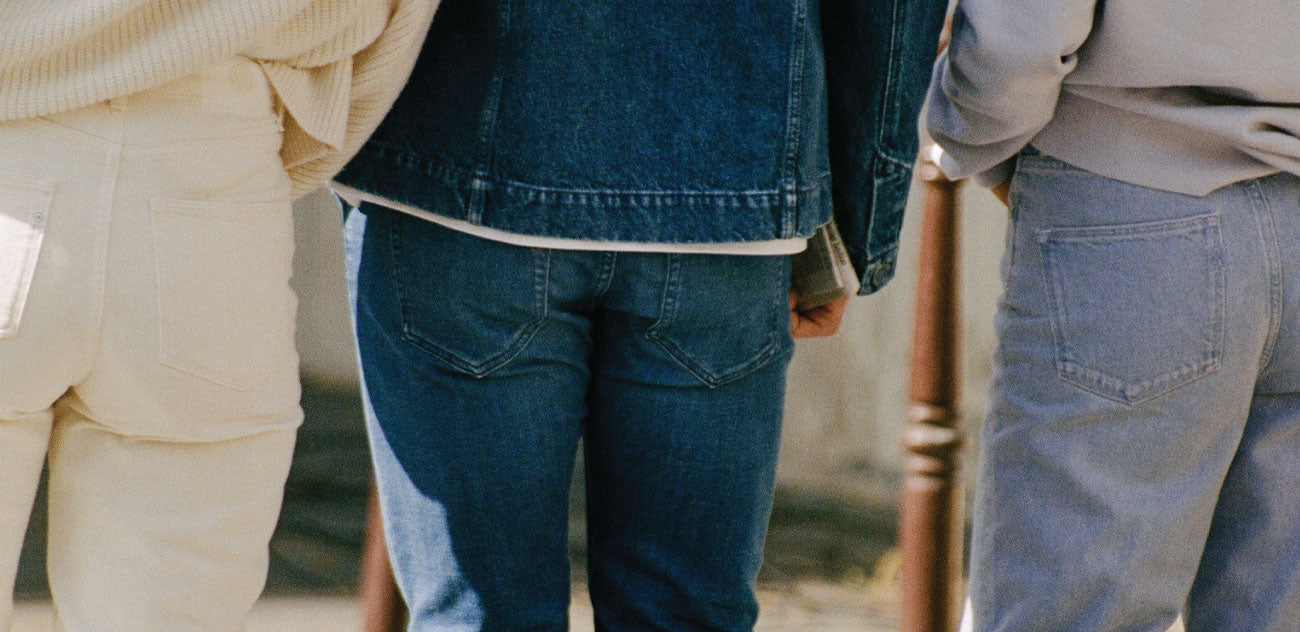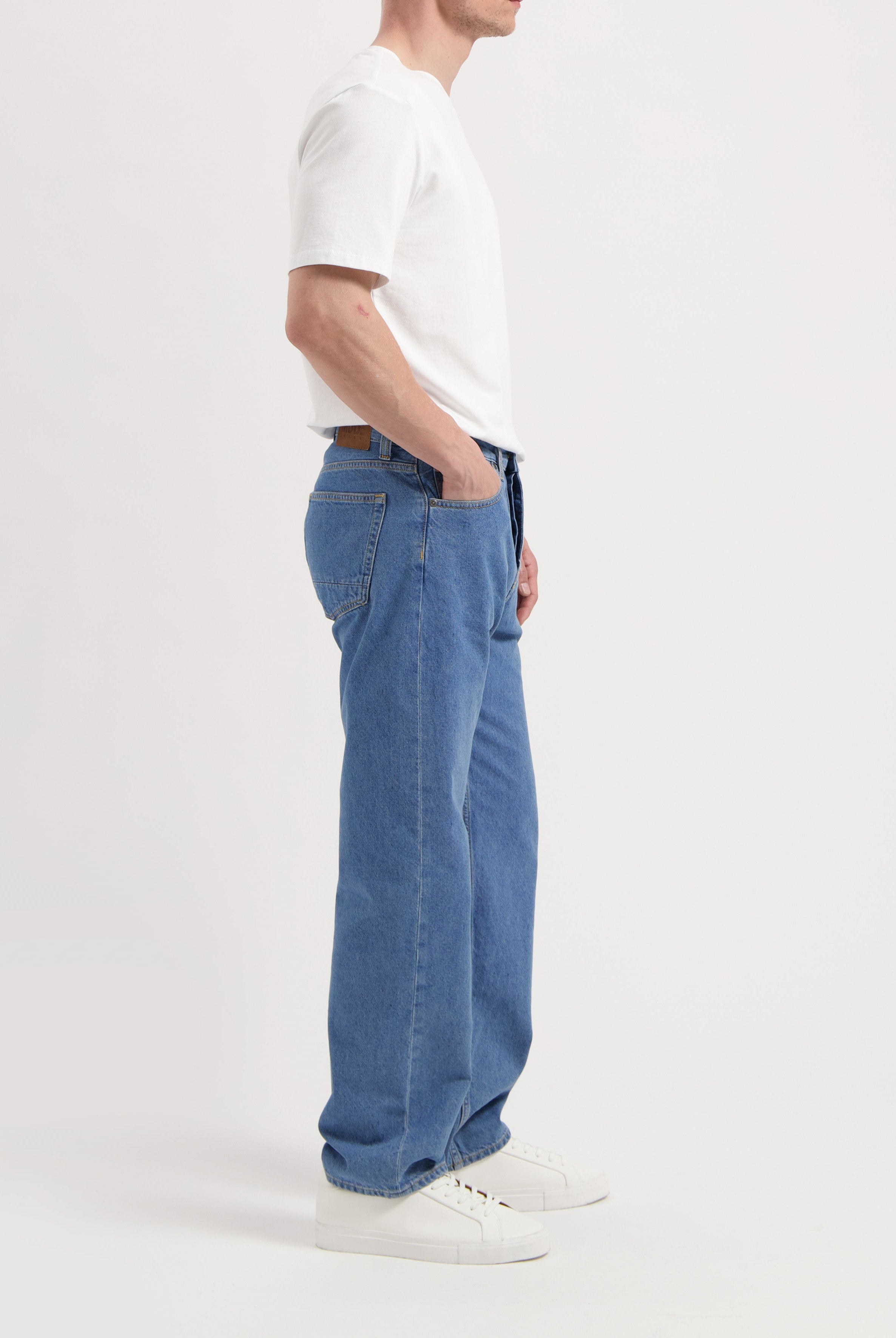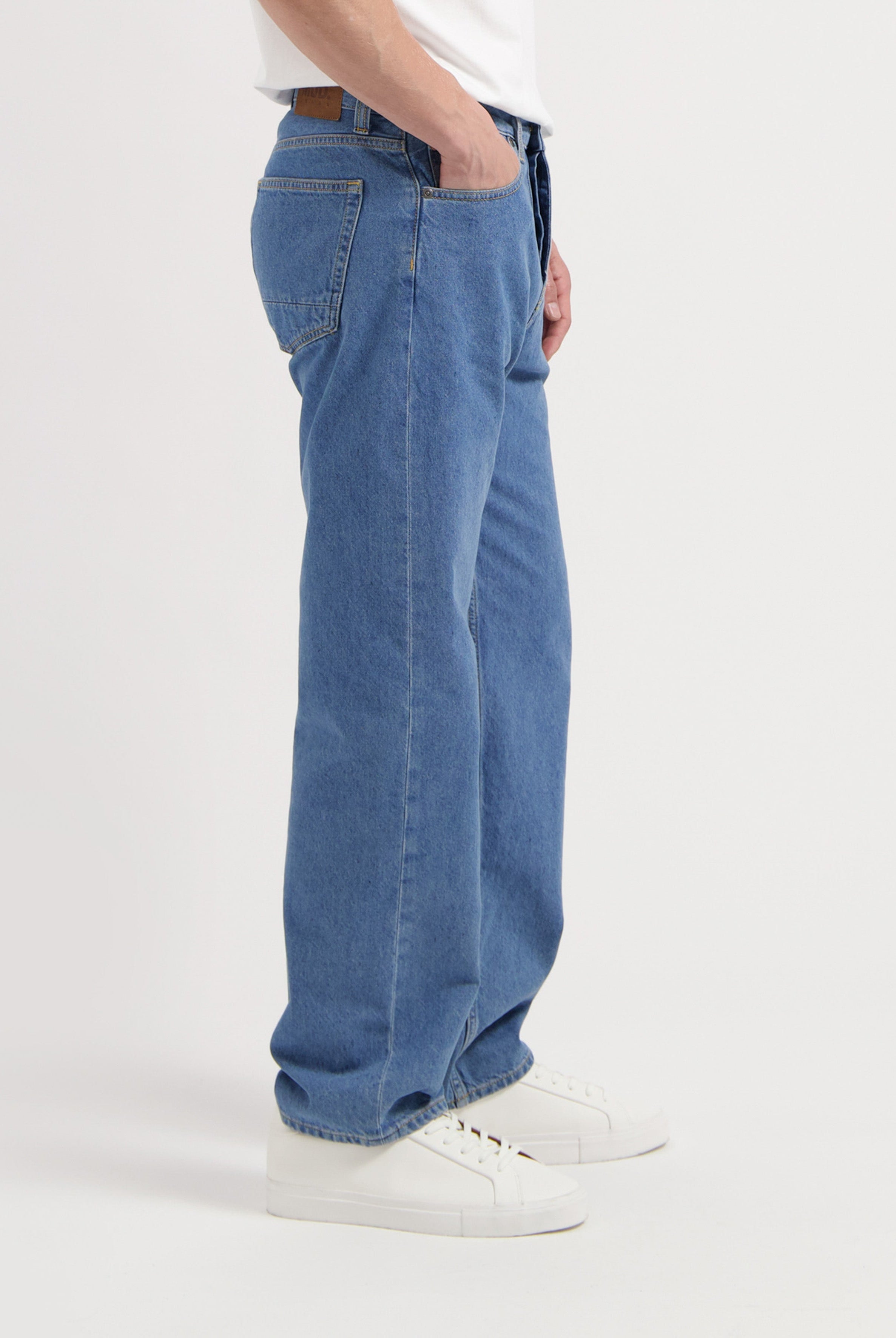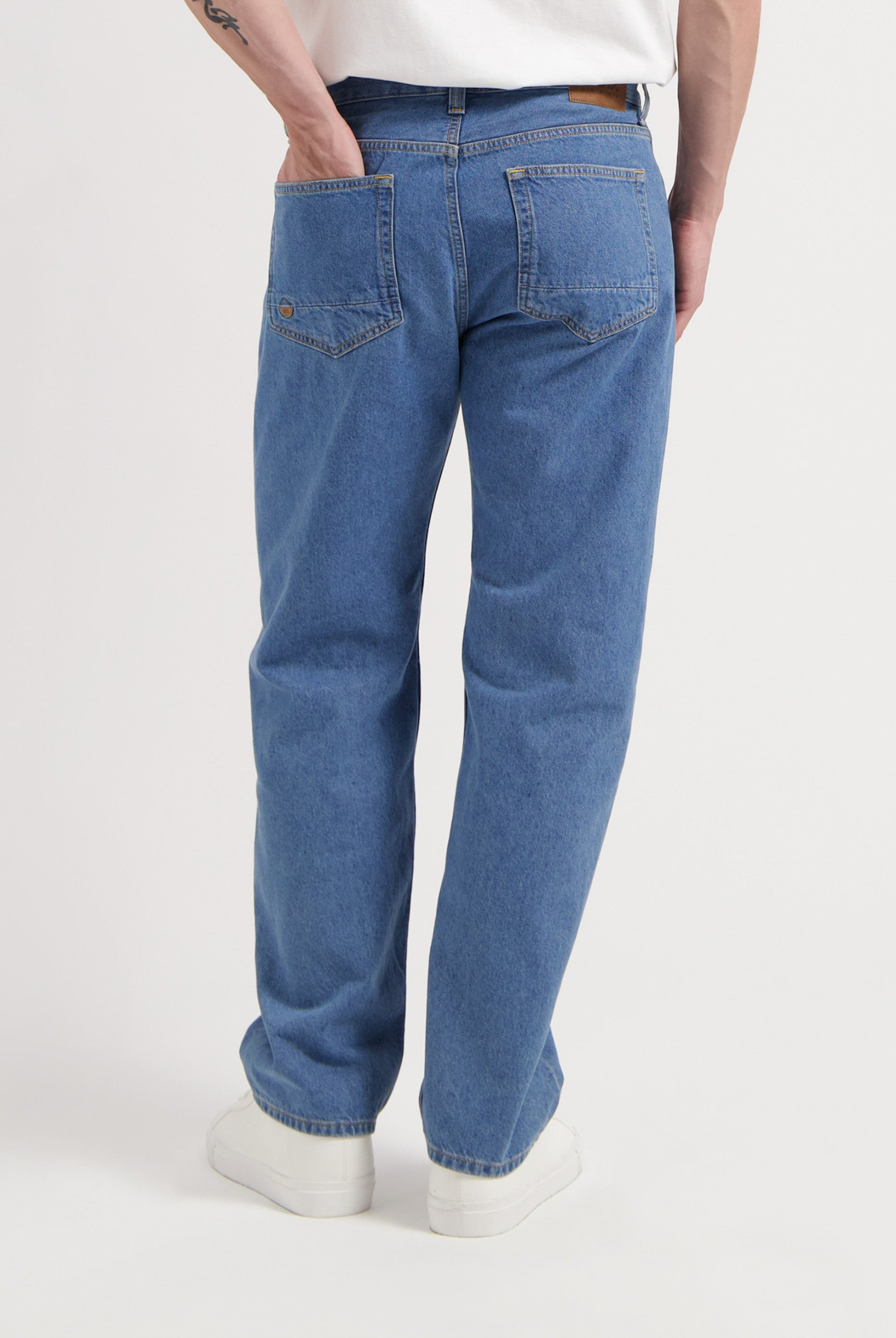In circular design, simplicity is key. There are two main materials that go into every single one of our fabrics: organic cotton, recycled cotton.
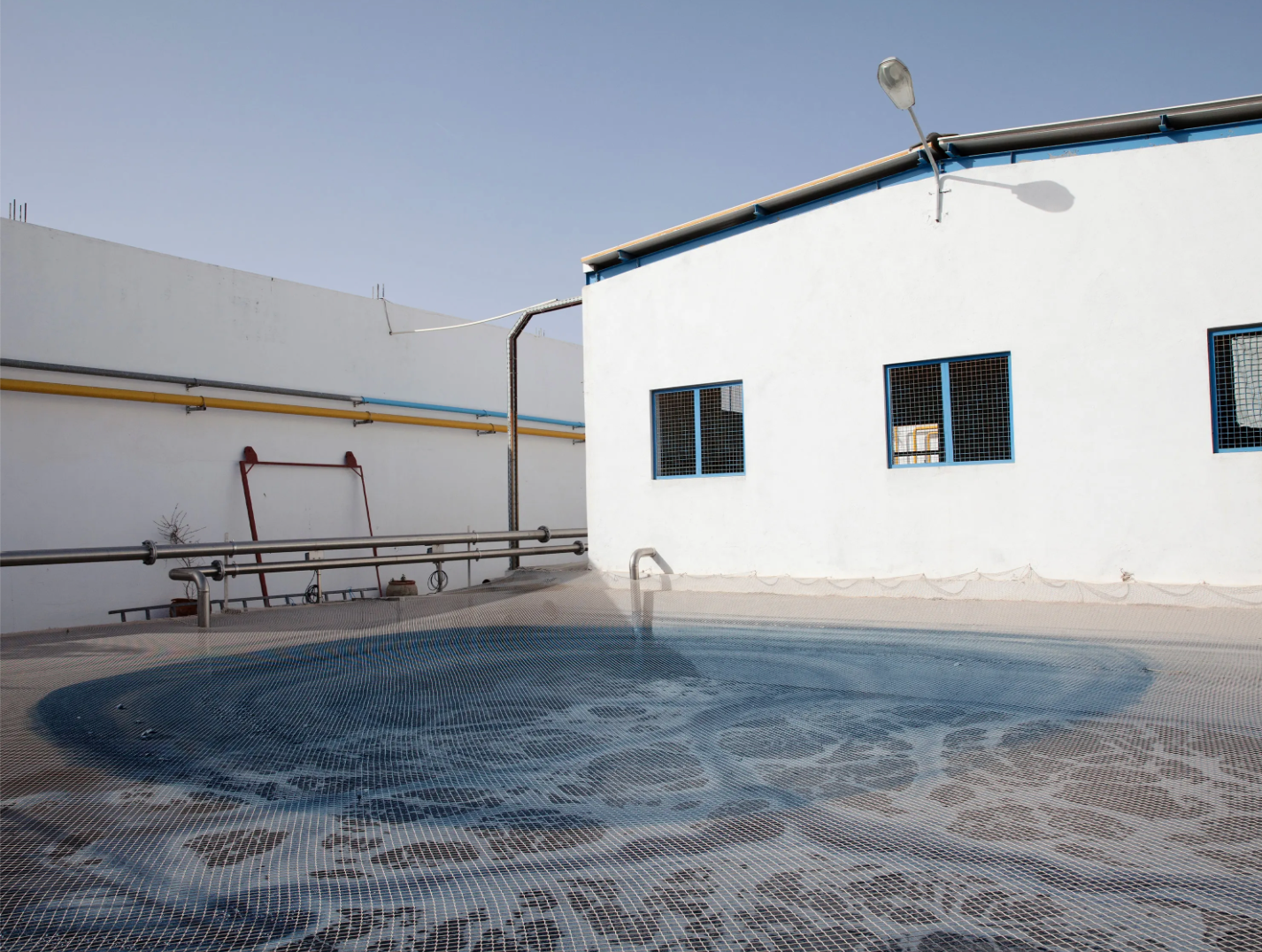
Laser
Laser is replacing the conventional use of sandpaper and the chemical potassium permanganate to create a worn effect on the jeans. Traditionally, this technique was used to brush open the surface of the fabric and make the white core of the yarns visible. By using laser, the surface of the yarn is burned off and the white core of the yarns is revealed. This new technique not only reduces the damage to the fabric, but also eliminates tough dangerous manual labour and the use of harmful chemicals.
E Flow
E-Flow allows us to cut down on water, chemicals and energy to achieve a certain effect, for example a lighter washing in some of our denim. The conventional process is replaced by nano bubbles consisting of air, water and natural chemicals. With just 5% of the water, 10% of the chemicals and 40% of the electricity used, the bubbles achieve the wanted effect. The best part is, the chemicals can be recycled after use.
Water filtration
The majority (95%) of this water used in production of our jeans is recycled, while the other 5% evaporates. The filtration method used is called reverse osmosis, which filters all indigo and fibre residues out of the water. The result is purified water that is cleaner than when it entered the factory. Of course our other suppliers also have a water filtration system in place which ensures that the water released into the environment is safe and clean.
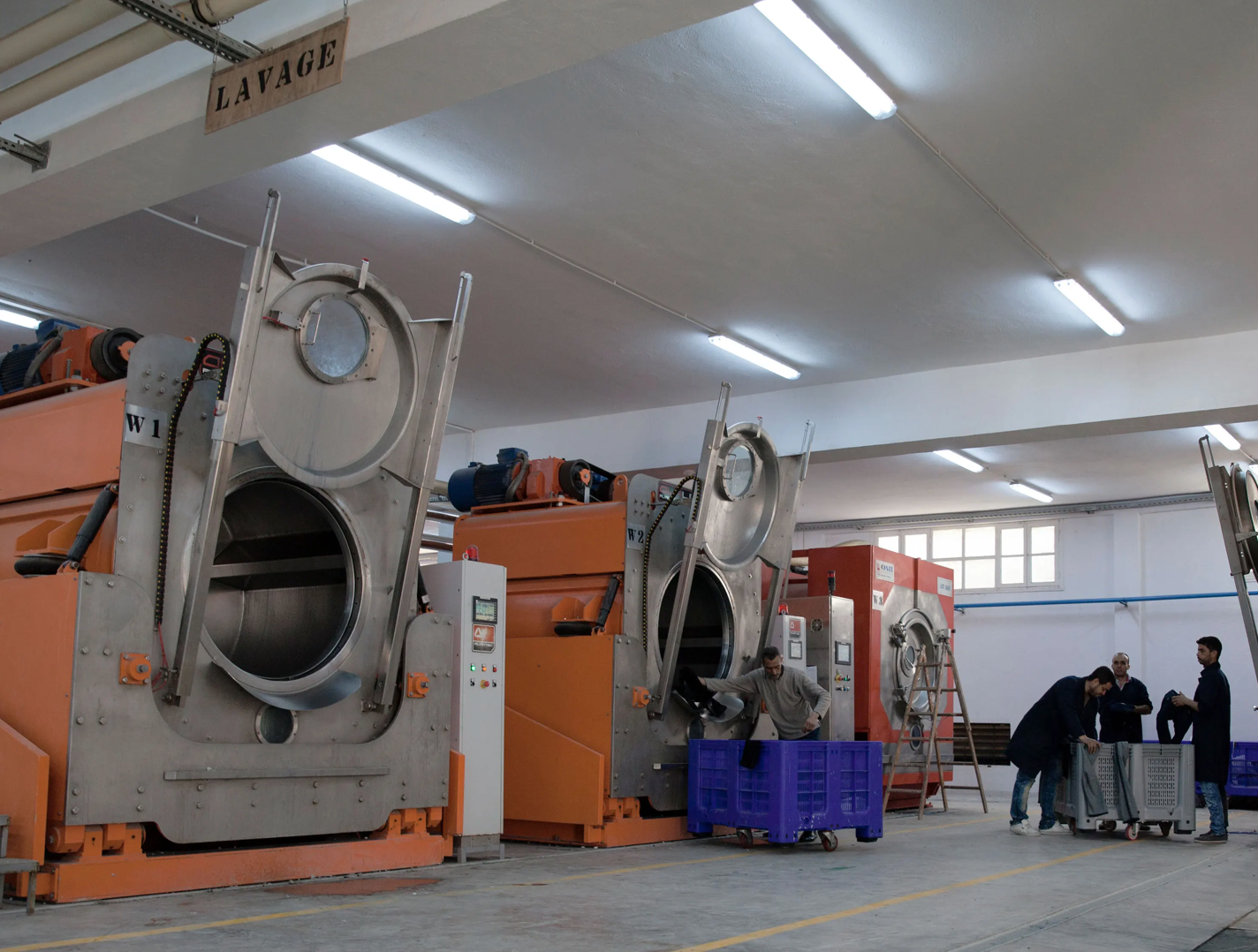
Energy savings
Our fabric mill Tejidos Royo is energy self-sufficient through a cogeneration engine. This is how it works. While a boiler produces energy, a steam engine catches the byproduct, heat, and converts it into more energy. The recycle factory Recovertex sources 50% of their energy through solar power.
Ozone
Traditionally, bleach washes are created using heavy chemicals, which is dangerous for the health of our colleagues in the factory. We use ozone to create the same effect, minus the negative impact. Oxygen is converted to ozone gas and the jeans are dampened, exposed to ozone and rinsed. Before the O3 is released into the environment, the ozone is simply reconverted to oxygen. Ozone reduces energy consumption and water use and eliminates water pollution caused by stone residues.
No-stone stonewash
In conventional processes pumice stones are put in a washing machine to create a stonewash effect. The particles of the stones pollute the water and the leftover stones end up as a waste product. We’ve simply replaced the stones by attaching abrasive parts in the washing machine that create the same effect when the jeans are falling onto it as when they are washed with stones.









